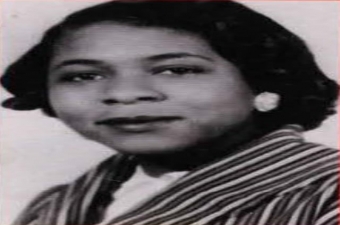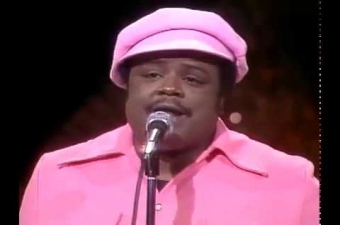Joseph S. Clark High School
1301 N. DerbignyNew Orleans LA 70116
Joseph S. Clark High School, which serves students from the musically fertile Sixth and Seventh Wards, started producing artists as soon as it opened in 1948 — trumpeter Milton Batiste of the famed Olympia Brass Band was in its first music class. Around 1950, when Shirley Goodman and Leonard Lee were underclassmen here, they would walk to J&M Studio after school with their friends and bug engineer Cosimo Matassa to let them cut a record. Eventually Matassa relented, charging them two dollars to record a demo of “I’m Gone.” Goodman’s distinctive voice caught the ear of Eddie Mesner of Aladdin Records, who paired her with Lee as a duo. Billed as “Sweethearts of the Blues,” Shirley and Lee climbed the R&B charts with “I’m Gone” in 1952. Other hits followed, including “Feel So Good” and “Let the Good Times Roll.”
From 1952-1959, while kids across the country went wild for New Orleans R&B, the revered band instructor Yvonne Busch groomed some of the city’s finest talent at Clark. She helped drummer John Boudreaux and other students form the Hawkettes, who recorded the Carnival staple “Mardi Gras Mambo” in 1954. Boudreaux went on to join the house band at the Dew Drop Inn, play on hit records including Ernie K-Doe’s “Mother-in-Law,” and eventually move to California with Harold Battiste’s AFO Executives.
Drummer Joseph “Smokey” Johnson—Busch’s neighbor in Treme—gigged with the likes of Sugar Boy Crawford while he was still her student at Clark. A drum cadence he wrote in her class became the basis of his widely sampled tune “It Ain’t My Fault,” a local classic from 1964. His bottom-heavy style made him a studio favorite—he played on “Big Chief” by Professor Longhair among many other hits. He also spent more than 20 years as Fats Domino’s drummer.
Busch had her students each learn two instruments. This method helped James Black, who studied trumpet and drums, become a composer as well as a masterful drummer. He played with Ellis Marsalis and other jazz heavies including Lionel Hampton and Cannonball Adderley. He also recorded standout drum breaks on popular songs like Eddie Bo’s funky “Hook and Sling” on Scram Records. Another student, Alvin “Shine” Robinson, distinguished himself as both a guitarist with Dr. John and a vocalist on his own recordings, such as “Down Home Girl.”
In 1983, a parent booster of the Clark school band asked band captain Philip Frazier, a skinny tuba player, to put together a student brass band to play a private function. He did, and afterward the schoolmates played for tips on the street in the French Quarter. Thus began the Rebirth Brass Band, which would include Philip’s brother Keith on drums and Kermit Ruffins on trumpet. Building off of the Dirty Dozen Brass Band’s modern take on brass band music, Rebirth’s heavy tuba riffs and danceable hooks set the template for every young New Orleans second line band since.
In 1984, with Ruffins and Keith Frazier still in the band room, a freshman named Byron Thomas started at Clark. The son of the local club DJ Sabu, he was already spinning in a group called New York Incorporated with the rapper Mia X (then known as Polo B, another Clark student). While Rebirth would bring rap into brass bands, Thomas would bring marching band and second line rhythms to hip-hop as Mannie Fresh. In 1989, he produced a local hit for Gregory D called “Buck Jump Time,” a reference to second line dancing. Later he became the in-house producer for Cash Money Records, where he put together a remarkable string of gold and platinum albums in the 90s and 2000s, including Juvenile’s “400 Degreez.”
For more about music education in New Orleans, click here.
For more about the Treme neighborhood, click here.
Videos

"Miss Yvonne Busch: Tricentennial Music Moments" from WWOZ, a brief look at the influential educator.
Video by WWOZ.
"Miss Yvonne Busch: Tricentennial Music Moments" from WWOZ, a brief look at the influential educator.

Clark High School alumnus Joseph "Smokey" Johnson with Joseph "Zigaboo" Modeliste and Bob French at the New Orleans Drum Summit panel from the 2008 Ponderosa Stomp Music History Conference.
Video © the Ponderosa Stomp Foundation.
Clark High School alumnus Joseph "Smokey" Johnson with Joseph "Zigaboo" Modeliste and Bob French at the New Orleans Drum Summit panel from the 2008 Ponderosa Stomp Music History Conference.

Shirley and Lee perform their 1956 classic "Let the Good Times Roll" in 1974. Shirley Goodman topped the R&B charts again that year with an early disco record, "Shame, Shame, Shame."
Video uploaded by Sam Spade.
Shirley and Lee perform their 1956 classic "Let the Good Times Roll" in 1974. Shirley Goodman topped the R&B charts again that year with an early disco record, "Shame, Shame, Shame."
Images





















